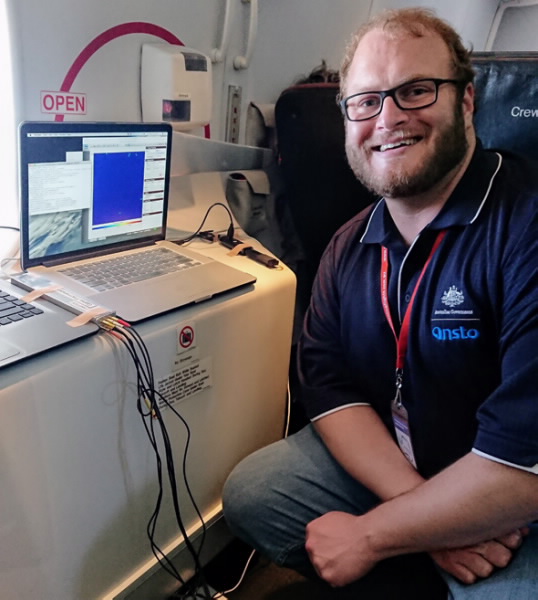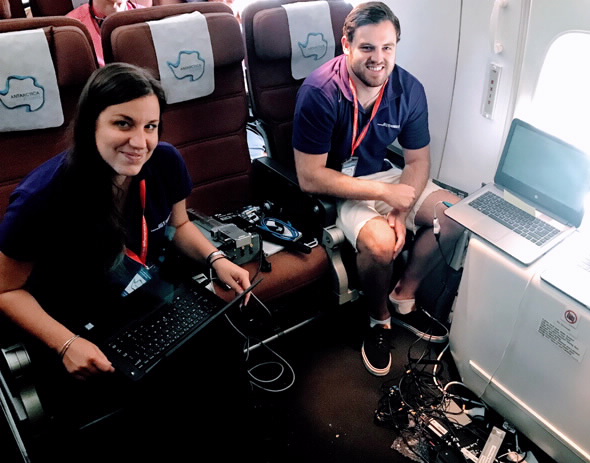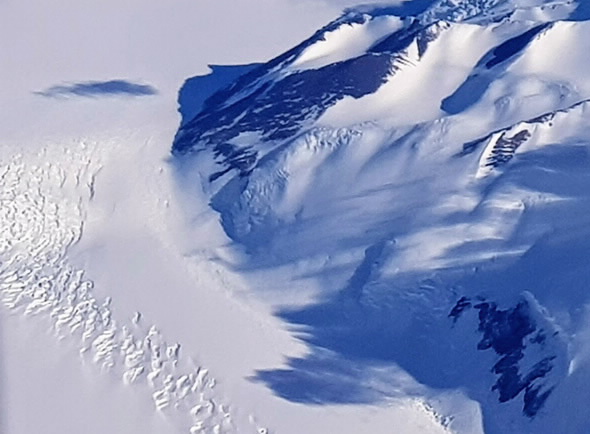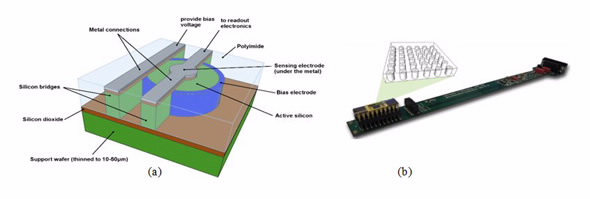
University of Wollongong researchers from Distinguished Prof Anatoly Rozenfeld’s Centre for Medical Radiation Physics and Dr Dale Prokopovich (pictured above) from ANSTO’s Nuclear Stewardship platform had the rare opportunity to collect data on a range of particles from the upper atmosphere on a one day flight above the southernmost continent.
Antarctica Flights, in association with QANTAS, arranged flights for three physicists to board a 14-hour flight that took place on 18 February and covered about 10,000 kilometres.
“It was extraordinary that we could bring SOI microdosimetry detector instrumentation developed by the University of Wollongong in collaboration with ANSTO and fabricated at SINTEF, Oslo, Norway as well as a Timepix detector developed by CERN and supplied by the University of Houston.
This instrumentation is exactly the same as the devices currently measuring the radiation environment on board the International space station for real time measurements of particles that approach earth from outer space,” said Prokopovich.
The detector instrumentation can detect many types of particles, including gammas, muons, protons and neutrons. At aviation altitudes you find elevated levels of most particles, including high energy galactic cosmic rays.
The Earth’s atmosphere and magnetic field largely shields these particles from reaching collection instruments on Earth.
The best opportunity to observe galactic cosmic rays on earth is near the magnetic poles where the heavy charged particles are deflected by the Earth’s magnetic field and at aviation altitudes to minimise the shielding effect of the atmosphere.
 |
| Stefania Peracchi and Benjamin James |
“Anatoly saw the potential of the opportunity and asked two postgraduate research students, Benjamin James and Stefania Peracchi to accompany me on the tourist charter. This included engagement with the passengers to describe and explain our experiments,” said Prokopovich.
The advanced microdosimeters are highly portable and were set up in an area about two square metres over the wing section of the plane.
 |
| The view of Antarctica at 17,000 feet |
As the plane approaches Antarctica it drops in altitude from approximately 30,000 feet to approximately 17,000 feet however due to the drift of the earth’s magnetic pole the south magnetic pole is no longer over the Antarctic continent.
Prokopovich, who did his PhD on microdosimetry for space and aviation environments under mentorship of Anatoly Rozenfeld at School of Physics, UOW, said the measurements went extremely well and the results would be shared in a publication.
The technology developed under Rozenfeld’s guidance is capable of operation in a wide variety of radiation fields, from background levels to high intensity radiation, and has recently been developed to confirm the biologically relevant dose of radiation administered to patients receiving particle therapy treatments for cancer.
“The UOW SOI microdosimeter, which is only several microns thick, is highly versatile and also extremely suitable for space and aviation environments,” said Prokopovich.
The Medipix which was developed at CERN by the Medipix collaboration has been applied by the University of Houston for the space program as a portable particle detector, which also measures the amount of energy as well as the track structure deposited by a cosmic ray particle. It is the size of a USB stick and allows you to identify a particle from its characteristic track.”
Part of the experiment involved ensuring the data collected was linked to GPS coordinates.
“It was also an opportune time as it was the solar minima, when magnetic activity from the sun is at a low. This means you get a stronger signal from the galactic cosmic ray particles coming in.
There was a great deal of interest from the passengers and the flight crew because we were carrying out actual research and could demonstrate the data collection in real time.
Antarctica Flights has generously agreed to on ongoing relationship with us for future flights, which depart on rotation from Australian capital cities during summer. We are very grateful for this arrangement,” said Prokopovich.
The data collected on the flight will be correlated with measurement undertaken at CERN.
James and Peracchi are supervised by Dr Thuy Linh Tran and Dist Prof. Anatoly Rozenfeld at the University of Wollongong along with industrial co-supervision by Dr. Dale Prokopovich at ANSTO.
Australia is currently considering whether to set up a space agency.
About the Centre for Medical Radiation Physics, University of Wollongong
The Centre for Medical Radiation Physics (CMRP), founded and led by Distinguished Professor Anatoly Rozenfeld (pictured below right) , is the largest medical physics education and research institution in the Asia-Pacific region. The CMRP is a recognized internationally as a world-leader in the development of semiconductor sensors for radiation dosimetry and microdosimetry, particularly for radiation therapy and space applications. The close association and synergy between the CMRP and ANSTO that has facilitated progress in radiation measurement and been active for more than 20 years.
The CMRP research program spans the development of innovative radiation dosimetry, medical imaging instrumentation and radiation detectors. The technology has applications for quality assurance on cancer patients along with radiation transport simulations to predict radiation doses to cancer patients including on micro (cellular) and nano-scale (DNA).
Microdosimetry Project for charged particle therapy and space and aviation applications
The CMRP have developed and patented a device to measure the relative biological effectiveness (RBE) from mixed radiation fields. In a long standing partnership with ANSTO the CMRP have developed several generations of innovative semiconductor radiation detectors (microdosimeters). These devices are small radiation detectors the size and shape of human cells, which in terms of receiving deposited ionising energy on a cellular level scale can allow the determination of RBE from the radiation.These detectors have numerous applications such as measuring the quality of a radiotherapy beam in particle therapy leading to improved health outcomes for patients to also being able to measure the background of galactic cosmic rays (GCRs) in aviation and space applications.
The design of the silicon microdosimeter is as a small microelectronic chip which is easy to use and doesn’t require high voltages or gas filling like other detectors. It can be placed in water to simulate a patient body or can be used on spacecraft or aviation for to estimate the amount and effect on cells from the GCR radiation.
CMRP in collaboration with ANSTO has recently developed a silicon microdosimeter that models the biological radiation response to cells by having 3D structured sensitive micron sized volumes. The fabrication of these devices has been in in collaboration with a Norwegian technology company
Published: 05/03/2018




